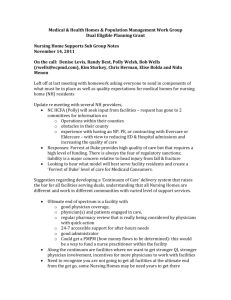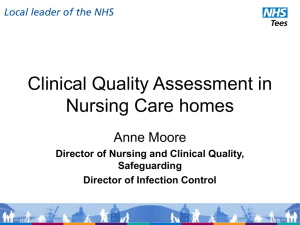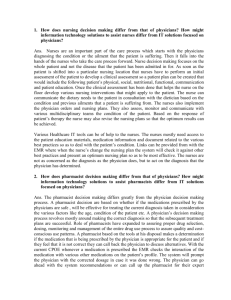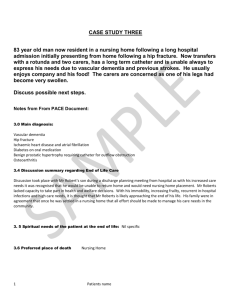Swedish Antibiotic Nursing home Trial (SANT)
advertisement
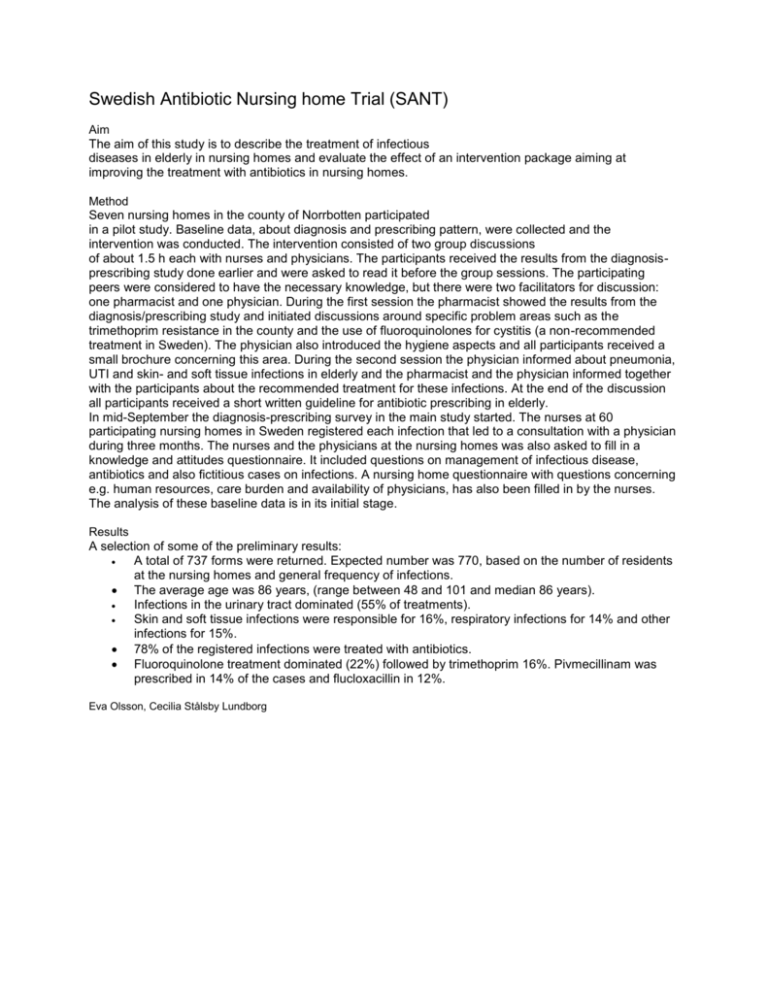
Swedish Antibiotic Nursing home Trial (SANT) Aim The aim of this study is to describe the treatment of infectious diseases in elderly in nursing homes and evaluate the effect of an intervention package aiming at improving the treatment with antibiotics in nursing homes. Method Seven nursing homes in the county of Norrbotten participated in a pilot study. Baseline data, about diagnosis and prescribing pattern, were collected and the intervention was conducted. The intervention consisted of two group discussions of about 1.5 h each with nurses and physicians. The participants received the results from the diagnosisprescribing study done earlier and were asked to read it before the group sessions. The participating peers were considered to have the necessary knowledge, but there were two facilitators for discussion: one pharmacist and one physician. During the first session the pharmacist showed the results from the diagnosis/prescribing study and initiated discussions around specific problem areas such as the trimethoprim resistance in the county and the use of fluoroquinolones for cystitis (a non-recommended treatment in Sweden). The physician also introduced the hygiene aspects and all participants received a small brochure concerning this area. During the second session the physician informed about pneumonia, UTI and skin- and soft tissue infections in elderly and the pharmacist and the physician informed together with the participants about the recommended treatment for these infections. At the end of the discussion all participants received a short written guideline for antibiotic prescribing in elderly. In mid-September the diagnosis-prescribing survey in the main study started. The nurses at 60 participating nursing homes in Sweden registered each infection that led to a consultation with a physician during three months. The nurses and the physicians at the nursing homes was also asked to fill in a knowledge and attitudes questionnaire. It included questions on management of infectious disease, antibiotics and also fictitious cases on infections. A nursing home questionnaire with questions concerning e.g. human resources, care burden and availability of physicians, has also been filled in by the nurses. The analysis of these baseline data is in its initial stage. Results A selection of some of the preliminary results: A total of 737 forms were returned. Expected number was 770, based on the number of residents at the nursing homes and general frequency of infections. The average age was 86 years, (range between 48 and 101 and median 86 years). Infections in the urinary tract dominated (55% of treatments). Skin and soft tissue infections were responsible for 16%, respiratory infections for 14% and other infections for 15%. 78% of the registered infections were treated with antibiotics. Fluoroquinolone treatment dominated (22%) followed by trimethoprim 16%. Pivmecillinam was prescribed in 14% of the cases and flucloxacillin in 12%. Eva Olsson, Cecilia Stålsby Lundborg

